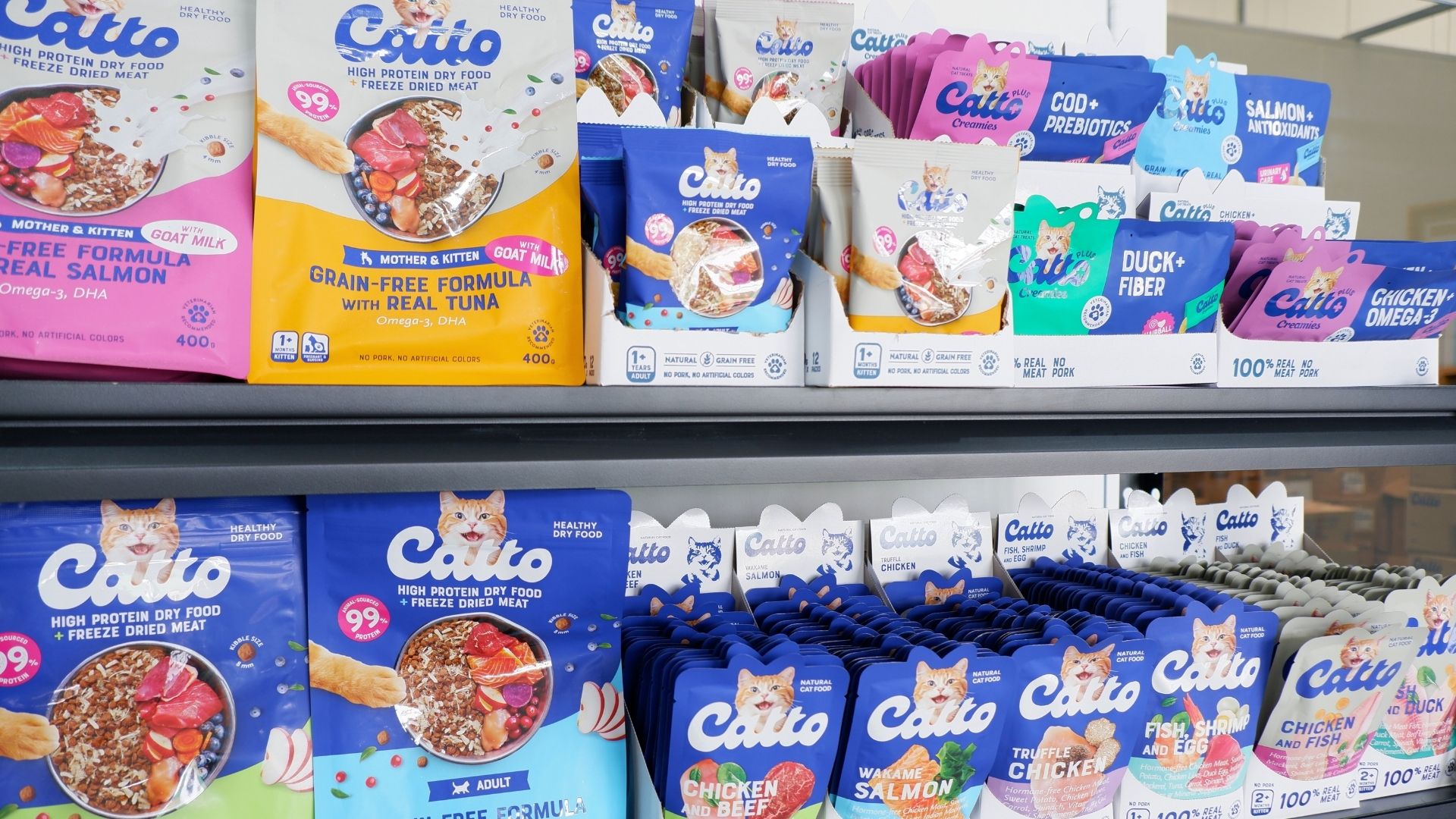Consumer startups in Southeast Asia (SEA) have shown remarkable resilience, maintaining growth momentum despite economic uncertainty. To stay ahead in this competitive and rapidly changing market, founders must continuously adapt to the evolving landscape of consumer behavior.
The latest e-Conomy SEA report by Google, Temasek, and Bain reveals that Artificial Intelligence (AI) is reshaping consumers’ purchase journey by replacing traditional linear searches with a dynamic, AI-powered discovery process.
Today’s consumers are increasingly using AI-powered search and multimodal inputs (text, images, videos, and voice) to answer more complex questions.
This leads businesses to adapt their strategies to capture these consumers at every stage of their journey, from piquing initial curiosity to making the final purchase decision.
Here, four female founders from East Ventures’ portfolio—Roshni Mahtani, Founder & Group CEO of The Parentinc; Cindy Angelina, CEO & Co-Founder of ESQA; Sharon Wong, CEO & Founder of Motherswork; and Tania Suganda, CMO & Co-Founder of Compawnion—share their strategies for keeping consumer brands at the forefront of the digital economy.
How has the D2C model matured over the years?
Direct-to-consumer (D2C) is a business model where brands sell directly to consumers without intermediaries. This allows D2C startups to offer agility, foster direct customer relationships, and respond faster to market demands than traditional retail companies.
The term D2C remains relevant and widely adopted in 2025, but its meaning has evolved into a more mature and expansive scope.
Fundamentally, D2C captures the operational strategy behind a company’s relationship with its end customer.
The primary shift in 2025 is that D2C practice is becoming less “pure” as brands scale, leading to the rise of the “Hybrid” or “Omnichannel” approach.
With over 200 million digitally-engaged new users, this insatiable growth of Southeast Asia’s digital economy is driven by rising consumer expectations and the massive influence of video commerce.
The digitally-native Gen Z is taking over the consumer landscape as they are reshaping retail expectations by demanding hyper-personalization and seamless shopping experiences.
Ultimately, this pressure brands and retailers to deliver seamless engagement across all channels, including D2C strategies to build direct customer relationships and capture data.
7 keys to win Southeast Asia’s consumers
For founders of consumer startups, capturing the SEA market is the billion-dollar question. But the female founders here have already walked this path before. Let’s go through all the questions you might have in mind.
1. How can D2C brands utilize social media and AI effectively?
Social media is more than just a posting platform; it is a comprehensive tool for advertising, marketing, and sales.
“Social media is advertising, marketing, communications, and selling wrapped up into one effective and incredibly efficient medium,” says Cindy Angelina.
For beauty brands like ESQA, this strategy is crucial for new product development and marketing strategies. Thus, using social media needs a dedicated marketing and communication strategy, just like its other channels.
Compawnion’s Tania Suganda emphasizes that staying relevant requires constant social media listening weekly, as trends can shift rapidly. Being a D2C business allows the company to have a direct, deeper connection with pet parents.
The e-Conomy SEA 2025 reveals that video commerce is a major driver of today’s sales, accounting for approximately 25% of total e-commerce GMV in SEA.
This shift is powered by “shoppertainment”—a convergence of content and commerce where entertainment formats blur with retail—allowing brands to drive high-frequency transactions through trusted creator recommendations.
Both brands are doubling down on their online visibility by collaborating with creators on various social media platforms to seize this surge.
2. Why is building a loyal community important?
A loyal community does more than purchase; they advocate.
“Building a loyal community is essential for D2C brands. Loyal customers not only buy products but also become ambassadors, spreading positive reviews,” says Roshni Mahtani Cheung.
She adds that theAsianparent has successfully built and nurtured the community, which helped the company to develop its own D2C brand, Mama’s Choice.
Motherswork, a sister brand of theAsianparent, utilizes a “feedback loop”—a two-way dialogue via newsletters and forums—to truly understand customer needs. “The two-way dialogue allows us to truly understand their needs and preferences,” states Sharon Wong.
3. How do data and analytics drive consumer insights?
Roshni highlights the importance of investing in data and analytics to understand customers’ evolving needs and preferences.
The Parentinc leverages data and analytics through the Asianparent app and Mama’s Choice brand to tailor product offerings and marketing messages.
“One recent example is theAsianparent and Youvit Vitamin D+ Kids Gummy that we launched in Indonesia and Malaysia this year. It was created in response to the rising concern among parents about Vitamin D deficiency in children.
Through app insights, surveys, and community feedback, we found that many parents confirmed this need and were actively searching for simple, enjoyable ways to supplement their child’s nutrition.
This collaboration with Youvit allowed us to design a product that specifically addresses a real need, while maintaining full control over the brand experience from browsing to checkout. By staying agile and responsive, we continue to innovate for mothers and their children,” explains Roshni.
4. How to maintain innovation and quality simultaneously?
“Innovation is the first strategy we have employed since day one,” says Tania. As a pet food-focused startup, Compawnion emphasizes scientific research and partnerships, which reflect the company’s commitment to product excellence.
The firm partnered with one of the most reputable veterinary universities in Indonesia, the University of Veterinary Medicine at Institut Pertanian Bogor, for scientific trials.
On top of that, Compawnion also partners with reputable vet clinics for feeding trials with in-patients while vet supervise and experience the actual results.
Moreover, from Cindy’s experience of building ESQA, combating plagiarism from competitors poses a notable challenge. Nevertheless, with a proactive mindset and effective strategies, the team can overcome these obstacles.
“Hence, product innovation is at the forefront of our brand; we are the first-mover of a lot of products in the country, and it is important to always stay ahead of the game,” says Cindy.
What “staying ahead of the game” means in 2025 requires integrating product excellence with the region’s rapidly evolving digital consumption habits.
With Southeast Asians spending 1.3x as much time on social media each week as the global average, this creates robust opportunities for businesses to roll out AI-driven services lest they become obsolete.
Not only is AI reshaping the entire consumer discovery and purchasing journey, but it also unlocks new value for businesses, helping them meet consumer expectations and boost workforce efficiency and productivity.
5. Why are transparency and education pivotal?
Today’s consumers demand to know what goes into their products. Transparency builds the trust necessary for long-term loyalty.
Brands like theAsianparent empower consumers with valuable resources and transparent information to make informed choices.
“Through our website and social media channels, we provide valuable resources, tips, and insights on pregnancy, breastfeeding, and baby care. We are also very transparent about our ingredients per product to ensure their safety for pregnant women, breastfeeding mothers, and babies,” shares Roshni.
Meanwhile, Compawnion prioritizes transparency to ensure product safety with certification and eventually gain the pet parents’ trust.
“To guarantee product safety, we already have Veterinary Control Number Certificate (NKV) Level 1 Certifications, a human-grade production facility, and to meet international standards, we are currently in the process of HACCP,” says Tania.
For information, NKV Level 1 means that Compawnion products are safe to export. Its products are also regularly lab-tested to ensure they are free from Salmonella, E. coli, and Clostridium.
Not only that, Compawnion’s entire line-up is preservative- and coloring-free; the firm is rigorous about minimizing chemicals in its products.
“Our products contain no preservatives at all—thanks to our trademarked Sterizero™ technology. What it does is actually leverage precise temperature to eliminate bacteria and harmful pathogens. In fact, Compawnion is one of the first, if not the only, local pet food brands to use this technology.”
6. How do global trends impact local D2C brands?
Monitoring competitors and global events allows startups to anticipate shifts in local behavior.
Roshni advocates for regularly reading industry reports and staying informed about emerging technologies to adapt proactively.
“Our Vitamin D+ Kids Gummy was also shaped by these observations,” she adds. “Globally, parents are becoming more proactive about preventive health, and gummies have become an increasingly preferred format because they’re fun and easy for kids to take. By keeping an eye on these shifts and understanding local nuances, we’re able to develop products that feel relevant and timely for families across the region.”
This shift towards a healthier lifestyle within the consumer segment is what we observe as the “wellness economy” evidence of a significant shift in the priorities and values of global, as well as Southeast Asian consumers.
These consumers are value-driven, more proactive, and seeking a meaningful experience that ultimately improves their daily lives.
AI, as a catalyst, can be the key to timely seizing emerging trends like this, as it has immense potential to scale businesses and increase productivity.
7. Should D2C brands embrace physical retail?
Last but not least, consider physical stores for your D2C startup. It aims to enhance your brand visibility and engagement amidst rising competition and evolving consumer preferences.
“Traditionally, D2C brands have primarily operated online, leveraging e-commerce platforms and digital marketing channels. While this approach offers numerous benefits, it also has limitations, particularly in providing tangible brand experiences.
We will definitely see more and more digitally native brands opening physical stores to make their brand more visible and engaging, providing immersive and multi-dimensional brand experiences that cannot be replicated in the digital realm alone,” states Sharon.
While trends change constantly, it is essential to know who your customers are and why they chose you from the early days.
East Ventures shares its thesis on D2C startups and how our passionate founders build their brands that are customer-focused, innovative, and personal. Dive deeper into the insight here.
Are you a startup founder in the D2C sector seeking VC funding? Send your pitch here.
This article was an updated version of “7 keys for understanding consumer behavior by SEA women D2C founders,” first published on 27 March 2024.






